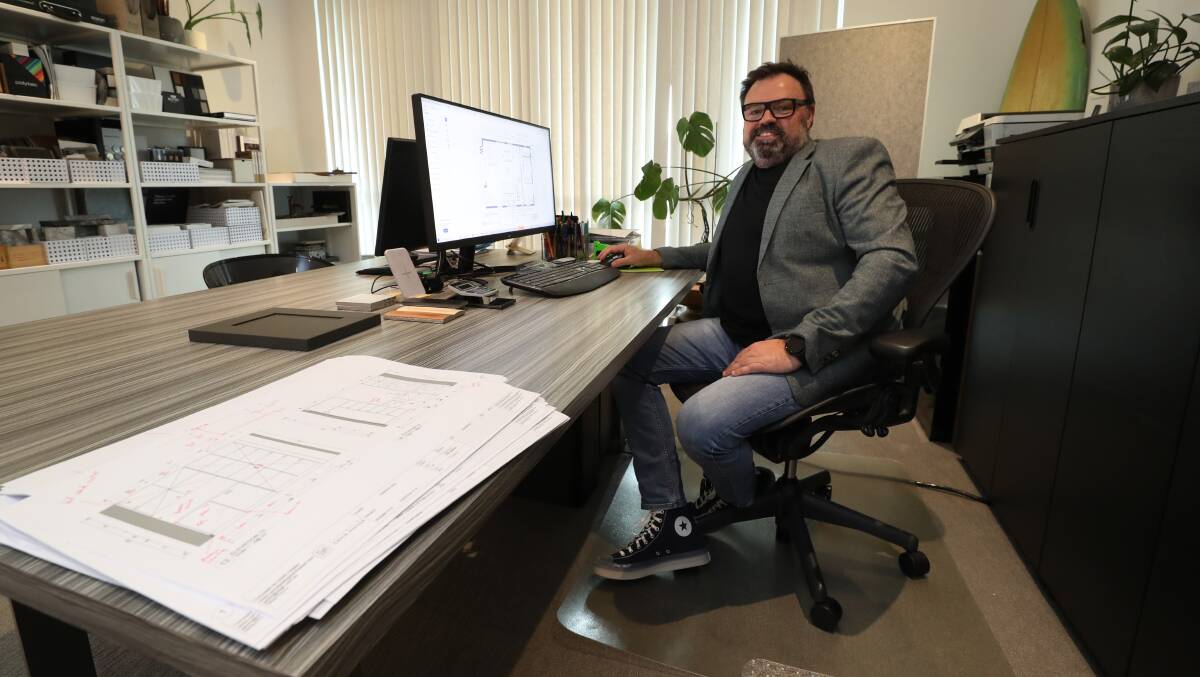
Illawarra interior designers are recommending alternatives to engineered stone after a Safe Work Australia report recommended that all engineered stone be banned in Australia due to deadly silicosis suffered by those who work with the product.
Subscribe now for unlimited access.
$0/
(min cost $0)
or signup to continue reading
Fairy Meadow interior designer Gavin Hepper said he was not using engineered stone for nearly a decade after media reports highlighted the high death toll among stonemasons working with the material.
"We removed all samples or brochures from our design studio, and we have not used it in any of our projects in the last eight to nine years," he said.
Owner and founder of Wollongong interior design studio Birdblack Design Sarah Nolen said on budget conscious projects engineered stone was used, however the business relied upon reputable trades to ensure installation was done safely.
"We have confidence in our stonemasons that they are following the procedures and doing the right thing to protect their workers," Ms Nolen said.
With greater awareness of the harms associated with working with engineered stone, Ms Nolen said that a focus would be on educating customers around alternatives.
"A lot of these other products have great benefits for day to day use compared to engineered stone," she said.
The Safe Work report was delivered to state and federal governments earlier this year. On Friday, state and federal workplace ministers agreed to decide whether engineered stone would be prohibited before the end of the year.
UOW lecturer and certified occupational hygienist Jane Whitelaw said the report laid bare that engineered stone was the new asbestos.
"The disease we are seeing out of this certainly is as bad as what we would see out of asbestos," she said.
Ms Whitelaw said one in four workers in NSW in the engineered stone industry would develop a life-shortening lung disease.
This occurs when tiny particles of silica that are produced when the stone is cut or shaped lodge in a worker's lungs, causing silicosis and lung cancer.
Chris Sheppard partner at RMB Lawyers in Wollongong said his firm had acted on behalf of dozens of silicosis victims who were "literally being strangled to death".
"It is a horrible disease which is not unlike those diseases caused by the inhalation of asbestos dust and fibre," he said. "However, silicosis tends to develop much faster than asbestos diseases and we are seeing workers in their 20's and 30's developing this disease and requiring lung transplants."
Workers who develop silicosis have entitlements to workers compensation benefits and modified common law damages. Claims are brought in the Dust Diseases Tribunal of NSW, which Mr Sheppard said ensured claims were heard as quickly as possible, particularly for those who are gravely ill.
"Most claims resolve by way of settlement or agreement at the compulsory mediation stage, which can usually be reached within 4 to 6 months of filing the claim," he said.
The engineered stone industry has called for engineered stone with a silica content at 40 per cent or below to be allowed, when used in combination with a licensing scheme.
The Safe Work report found that there was no evidence that any level of silica in engineered stone was safe.
Ms Whitelaw said that while there were silica levels in natural stone that were considered safe, engineered stone was a different beast.
"The fact that it has been manufactured and cut and polished makes it more toxic in the engineered stone product."
With consumers still having a choice about what product they select, Mr Hepper said there were viable, cost effective alternatives.
"We've proven we can still install sustainable benchtops that are fit for purpose and don't contain those extreme health risks to the trades and clients, still meeting budgets."
Our news app has had a makeover, making it faster and giving you access to even more great content. Download The Illawarra Mercury news app in the Apple Store and Google Play.


